A Complete Guide That Breaks Down The Relationship Between Reputation Management & Local SEO - PLUS the critical part this plays in SEO today.
Warren Buffett said that it takes 20 years to build a reputation and only 5 minutes to ruin it.
In today's world, however, this can happen much faster.
In today’s world of TikTok videos, competition-attention economy and forever-changing trends, businesses don’t have it easy.
As a business owner, it is a constant struggle to keep all the chains of a business moving and staying on top of changing customer's expectations.
Whether you are an established business owner or have just started, happy customers can lead to increased customer retention and higher sales and attract new customers.
The old phrase “customer is always right” plays a crucial role in making your brand successful.
Happy customers = high retention rates
A part of making sure your customers are happy is through reputation management.
Your potential customers are likely to search for you online (this is called Local SEO you can learn more about our local SEO services here).
However... here's where reputation management meets Local SEO
If you have a positive reputation, customers are more likely to choose you than a business with a negative reputation.
Objective feedback via reviews helps people gauge your business.
But here, you may think you can’t control what people say about you.
You can’t make people write reviews for you…
How do you even create a positive reputation?
Hold that thought.
Businesses don’t have to be bystanders.
They can actively control the narrative around their brand, whether it is a positive or negative review.
This article will discuss how businesses can manage their reputation and how local SEO can help.
We will also explore the relationship between reputation management and local SEO.
What Is Reputation Management And Why Is It Important?
According to Gartner, reputation management is the practice of influencing stakeholder perceptions and public conversations about an organisation and its brands
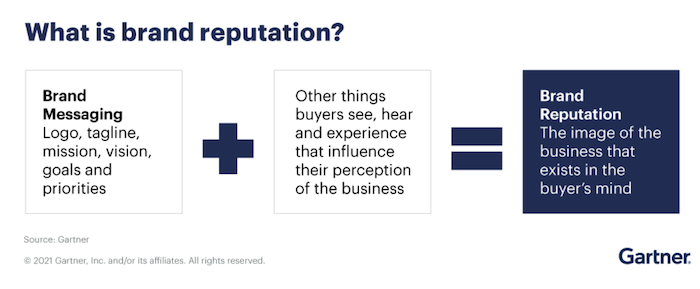
Businesses don’t exist in a silo, everything that’s being said about a business can make or break it.
With online conversations becoming the norm, reputation management is super important.
When a company's reputation is damaged online, it can have severe consequences for their bottom line. However, with the right SEO strategies and techniques, businesses can manage any negative feedback effectively and tick all the right boxes in the Local SEO checklist.
A positive online reputation can lead to high search traffic, enhanced brand value and high customer satisfaction.
In contrast to that, a negative online reputation can tank a brand value and reduce search traffic contributing to less sales and decreased profitability.
Relationship between Local SEO and Reputation Management
Reputation management and SEO are closely related.
SEO focuses on improving a brand’s visibility on search engines.
Reputation management focuses on improving a brand’s reputation on the internet.
When a brand has a positive online reputation, it can increase a website's visibility on search engines leading to increased traffic and sales.
SEO can help improve a brand’s reputation through website optimisation. This includes using relevant keywords, creating quality content, mobile-friendly websites and backlinks (for a full checklist check out our Local Ranking Factors guide).
We know how much emphasis Google pays to all these factors.
And by keeping those things in mind, you can make sure your business is ranking well.
After all, the best place to hide a dead body is page 2 of Google search results.
Research indicates, 90% of searchers do not go past page 1 of the search results.
Over 50% do not go past the first three results on page one.

Reputation management can also impact SEO by influencing the type of content that appears in search engine results.
Positive reviews, social media profiles and press releases help improve a brand’s online reputation. It can lead to increased visibility on search engines.
Conversely, negative reviews or comments harm a brand’s online reputation resulting in decreased visibility.
So how do you control your reputation?
It’s quite simple really - SEO can help you shape the narrative around your brand
Research into your brand, product or service starts online. Your customers will look up your website, pop your business name on Google search and look up reviews.
Before we discuss the strategies, do you:
- Track what comes up on the first page of the SERPs for your brand?
- Monitor your brand mentions?
- Have you set up an alert to find any mention of your business?
These are just a few of the things you need to track to manage your online reputation. Keep reading to discover the tips and tricks to help in reputation management.
7 SEO Reputation Management Strategies In Local SEO
Up To Date Google Business Profile Listing
Your Google Business Profile (formerly Google My Business) is a branded search result you fully control. Google Business Profile is a free tool provided by Google that allows businesses to manage their online presence across Google, including Google Maps and Google Search.
By optimising your Google Business Profile listing, you can effectively manage your online reputation and attract more customers to your business. Setting up your business address, phone number, and website and adding your opening hours can help you gain visibility and increase trust and credibility.
Here are some ways your Google Business Profile listing can help with managing your online reputation:
- Improve Your Online Visibility
When someone searches for your business on Google, your Google Business Profile listing will appear prominently on the search results page, making it easier for potential customers to find your business. - Respond to Customer Reviews
Google Business Profile also allows customers to leave reviews about your business. By responding to customer reviews, both positive and negative, you show your customers you care about their experience and are committed to addressing any issues they may have.
Additionally, responding to reviews can help build loyalty with existing customers and encourage them to continue doing business with you.
This is how we do it.
Responding to positive reviews
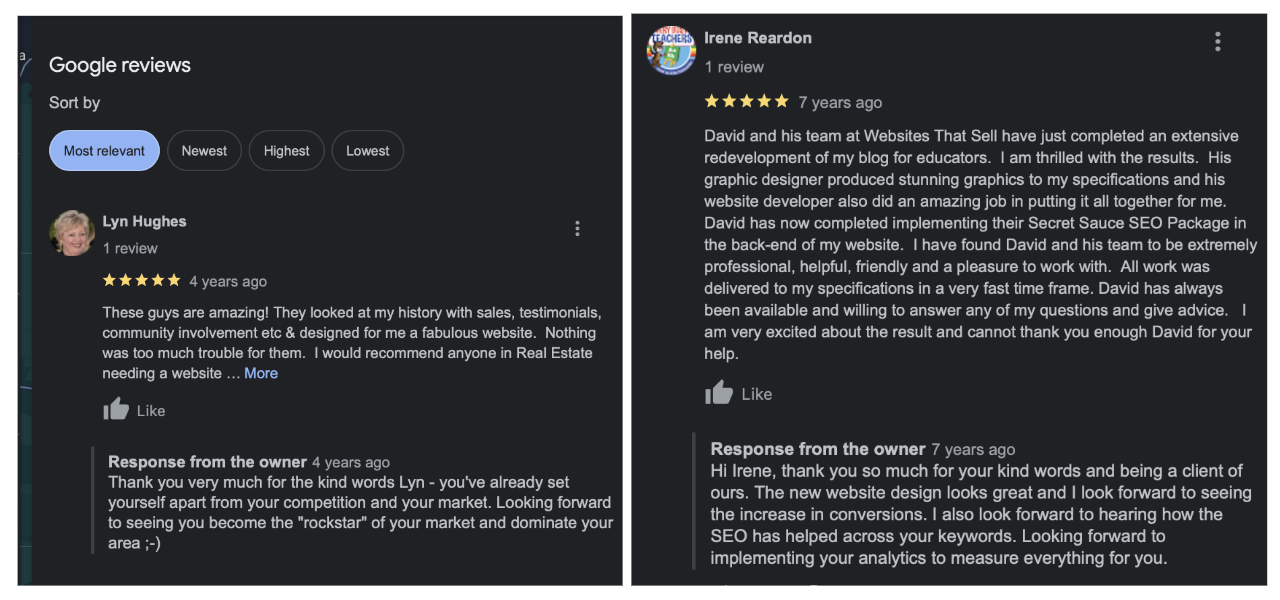
Responding to negative reviews
It may feel hard to do it, but giving a response to a negative experience makes your customers feel you genuinely care.
When it comes to negative reviews, here are few best practices you might want to consider:
- Respond to the review as soon as possible
- Don’t lose your cool and reply rationally
- Try to take it offline - give a phone number where your customer can reach you and discuss the issue
- Apologise and take responsibility for their negative experience
- Invite them back and ask for a second chance to make it better
Here’s how Oaks Hotel has done it:
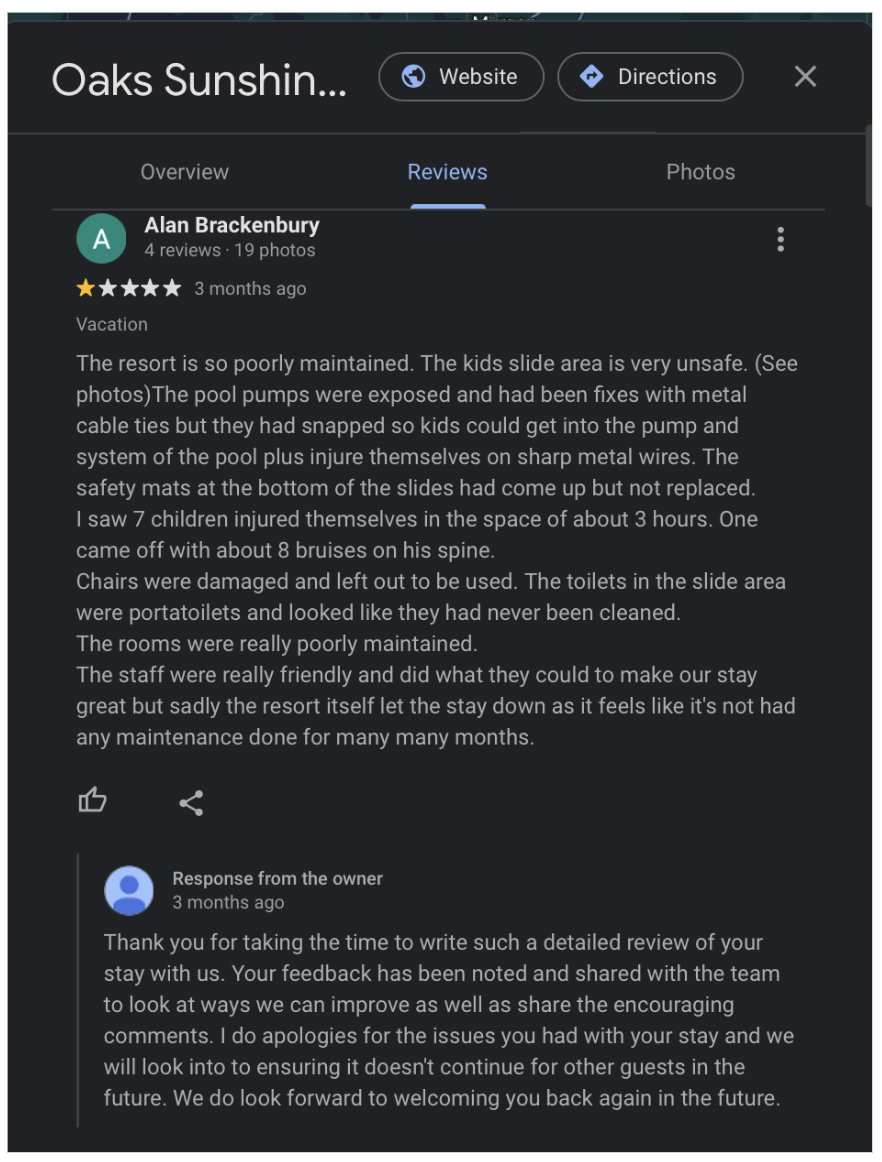
When a customer complained for their terrible pizza at Domino’s, this is how they responded:
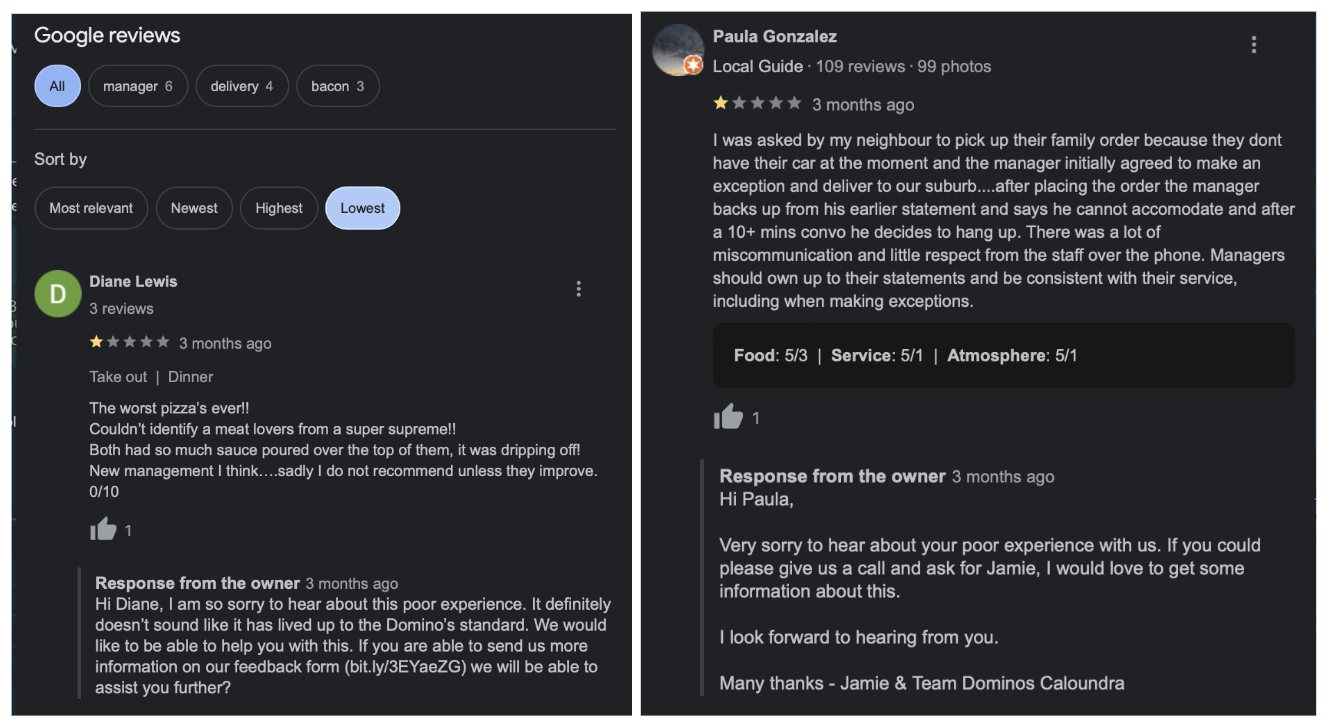
Share relevant and valuable information
Your Google Business Profile listing lets you share relevant and valuable information about your business, such as special offers, events, and updates.
Regularly updating your Google Business Profile listing keeps your customers informed and engaged and builds a positive online reputation. Additionally, it also helps improve your search engine rankings.
Below are a few examples of how Queenslanders are doing it on Google Business Profile:
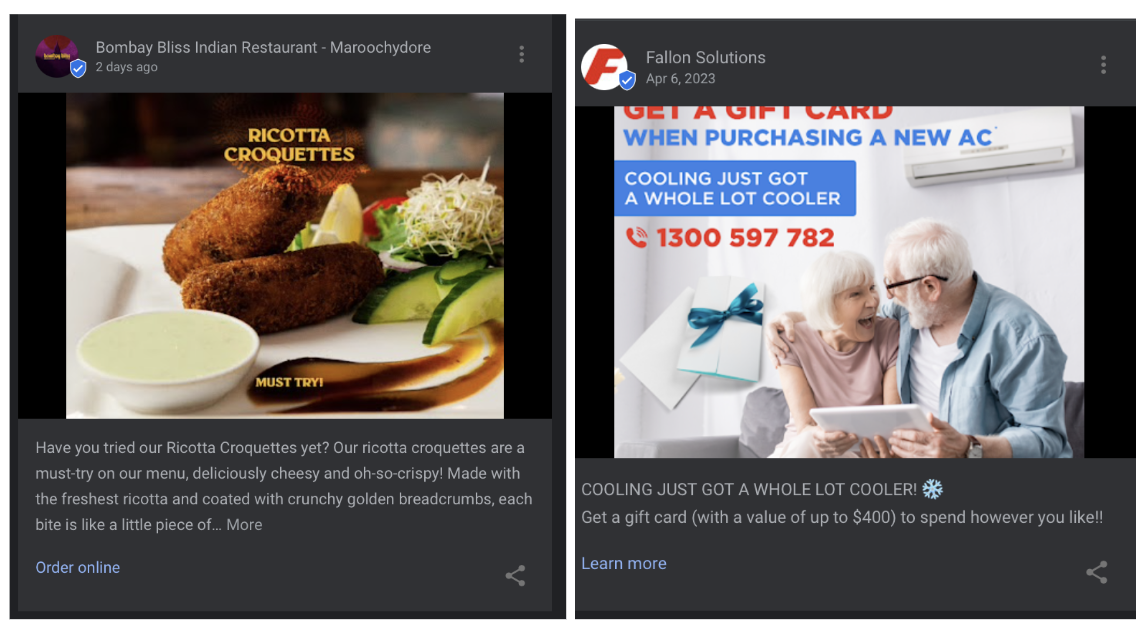
Monitor your listing for accuracy
It is essential to regularly monitor your Google Business Profile listing for the accuracy or outdated information that can negatively impact your online reputation and deter potential customers from doing business with you.
Regularly reviewing your listing for accuracy and making necessary updates can help ensure your business is represented accurately online. This includes updating your business hours, address, phone number, and other relevant information.
For example, here’s a snapshot of our business details with our current address, phone number, and service areas.
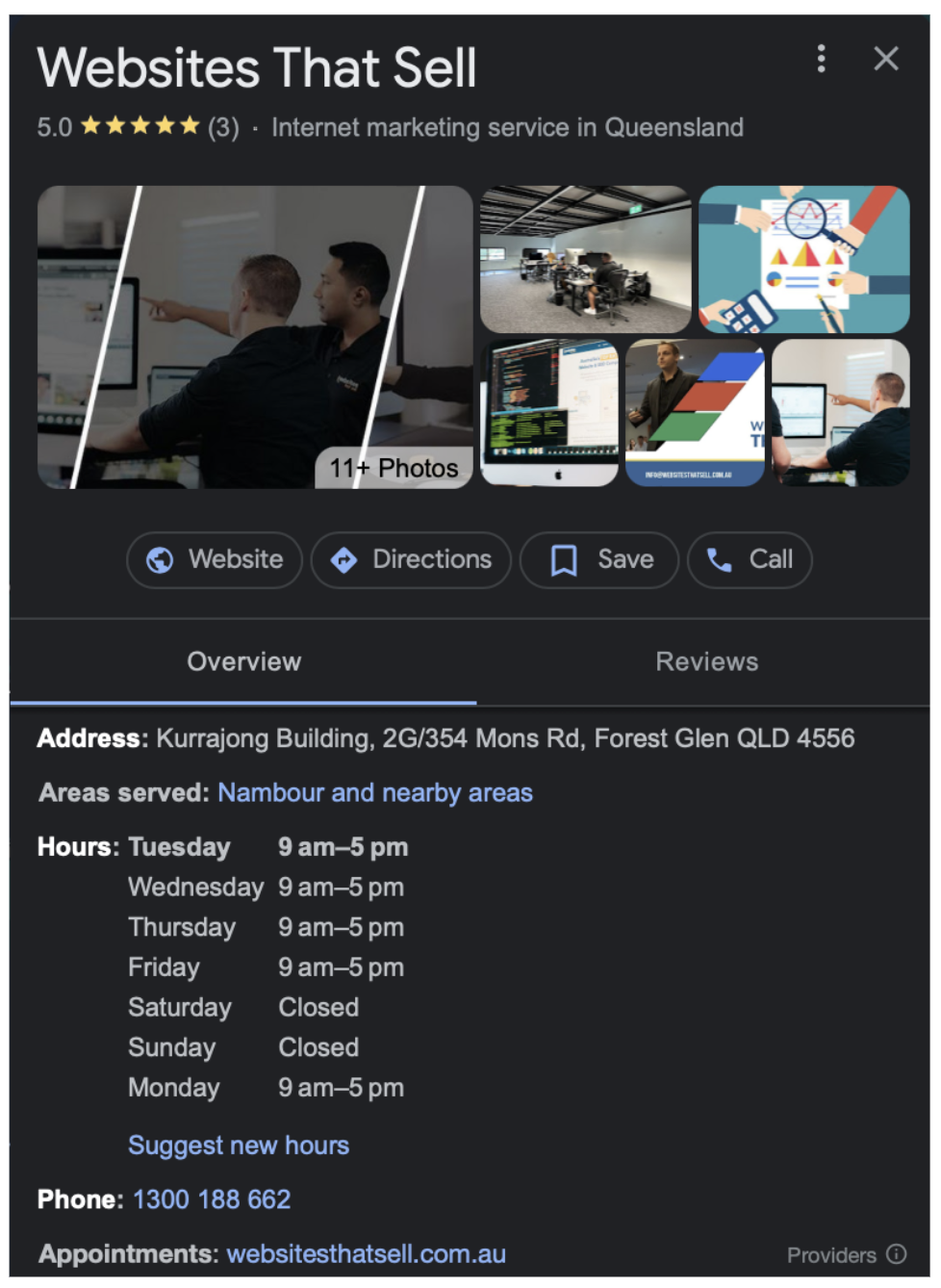
Set Up Profiles on Review Sites, Directories & Social Media
Having an updated profile on web directories, social media sites helps you rank highly for branded search queries.
It’s a great way to get citations and backlinks from external sources.
We are talking:
Business directories like:
and more...
You can pick and choose prominent business directories in your region. Listing your business on these directories is free advertising for your business. It helps you rank better in search engines. But that’s not all.
The benefits of setting up your profile are multiple - it leads to greater exposure, visibility, builds trust and credibility among your customers.
If you have set up your profile already, that’s amazing.
But your job doesn’t end here.
Stay active on those websites.
Ensure your profile is up-to-date. If you have changed your website URL, business location or phone number, make sure you update the information on all the directories where you have a profile.
Make sure you respond to all feedback on review sites - whether it is positive or negative.
Track Brand Mentions
It’s a great thing to stay in the loop of who’s saying what about your brand.
Sometimes your customers will tag you. Sometimes they will leave a review online.
Sometimes your brand will be mentioned without you ever getting to know about it.
Or your competitors will get mentioned and you could swoop in…
Brand mentions is the art of uncovering who’s saying what about your business. There are multiple tools you could use to monitor your brand.
SEMRush, Google Alert, Hootsuite, Buzzsumo are just some of the tools you could use.
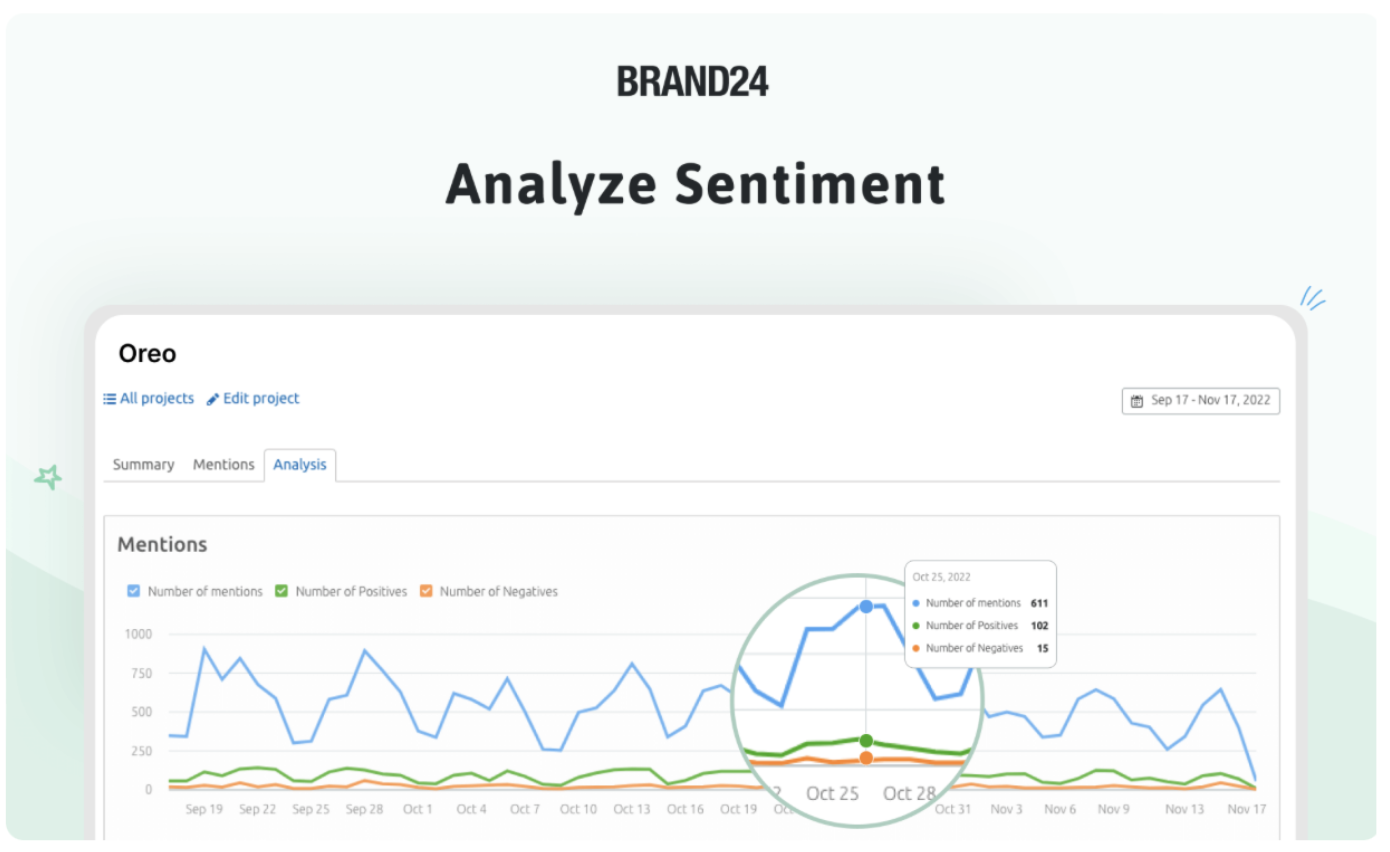
Example - This is a snapshot from the Media Monitoring tool offered by Semrush that lets brands analyse user sentiment and manage their reputation online.
All these tools help you understand the sentiment people have when they use your brand - negative, positive or neutral.
These tools can help you improve your reputation, identify and handle crises before they get out of control. You can even find people who love your brand and turn them into your brand ambassadors. Plus, get backlinks by connecting with the authors of reviews or mentions.
When you know people are talking about you, it is easy to respond to any comments and show your customers you value them.
Plus it can help you incorporate user-generated content in your content strategy.
What should you monitor?
Key areas to monitor are:
- Social media platforms - Twitter, Facebook,Instagram, etc
- Online forums - Quora and Reddit
- Review sites ( Google, Yelp, TripAdvisor, etc)
- Competitors
- Industry trends
- Prominent people associated with your industry
When you are monitoring your brand, make sure you account for misspellings or variations of your brand or product names.
Showcase Star Rating In Local Search Results Using Schema Markup

This is what we mean by star rating…
When you see a star rating in the SERP, it is bound to build credibility and trust in the brand.
According to a survey by Bright Local, 38% of consumers trust brands with at least a 4-star rating,
Star rating in SERPs can help a brand build trust and attract visitors.
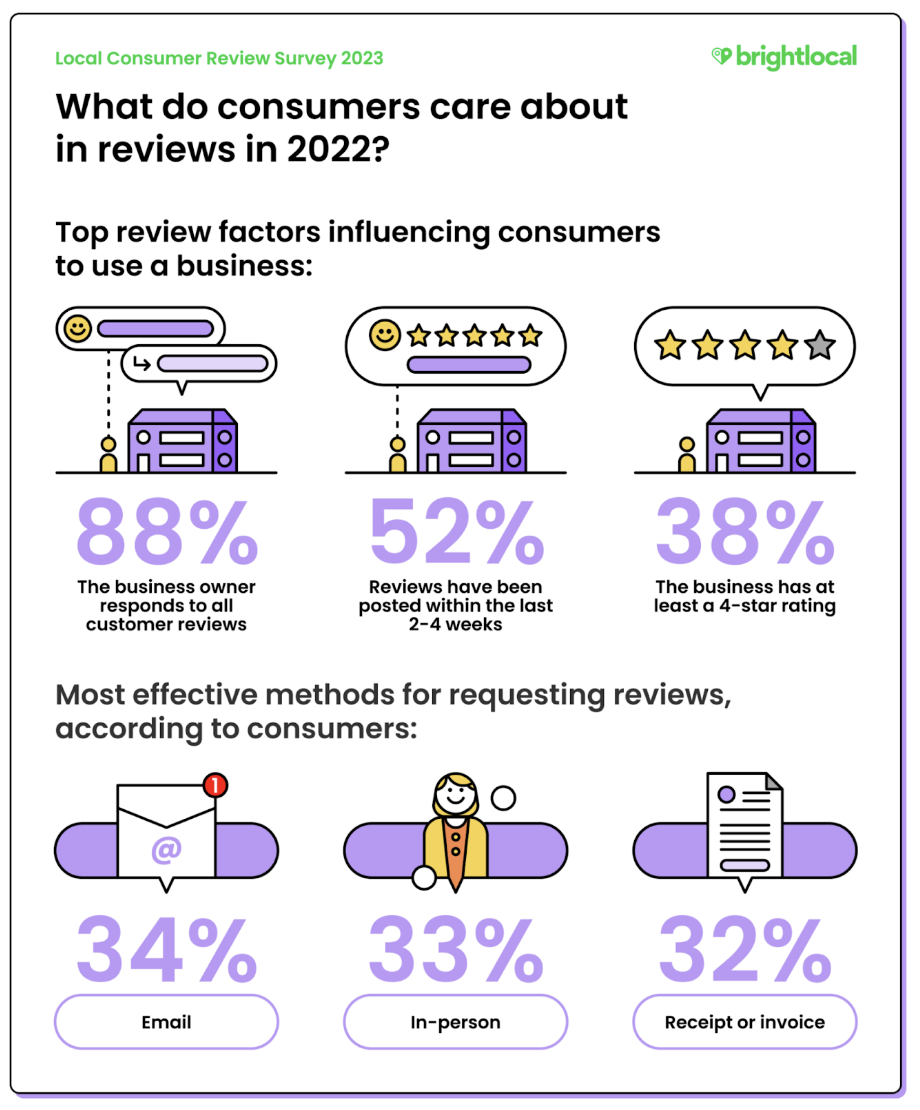
Even if you are not in the 1st position, a star rating has a higher clickthrough rate.
According to John Mueller
“Google review count and review score factor into local search ranking. More reviews and positive ratings can improve your business’ local ranking.”
All you need to do is add Schema markup to your website and let its magic work on your website.
So if we have piqued your curiosity here and you are wondering how you can get a star rating, we have created a video tutorial below.
Learn how to implement the script here:
These schema markups will work if you have received reviews.
Once you have created a schema markup, validate it here - Google Structured Data Testing Tool.
Star ratings can be seen on rich results like Recipes, Products, Reviews,
Recipe Mark Up
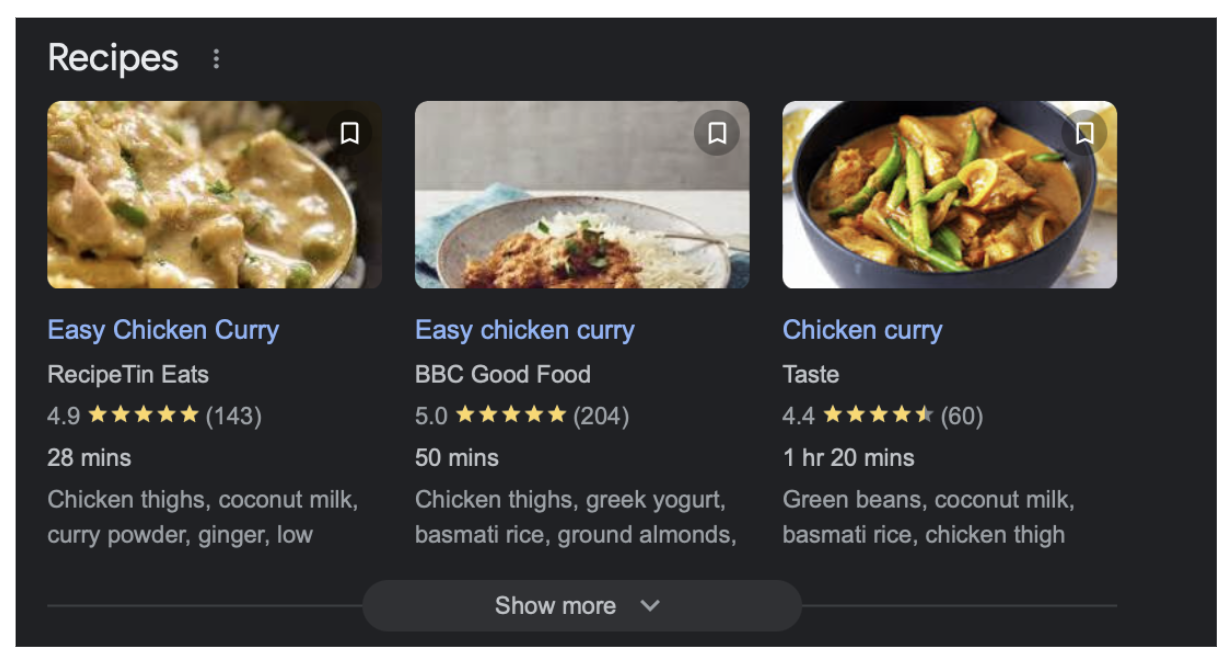
Product Mark Up
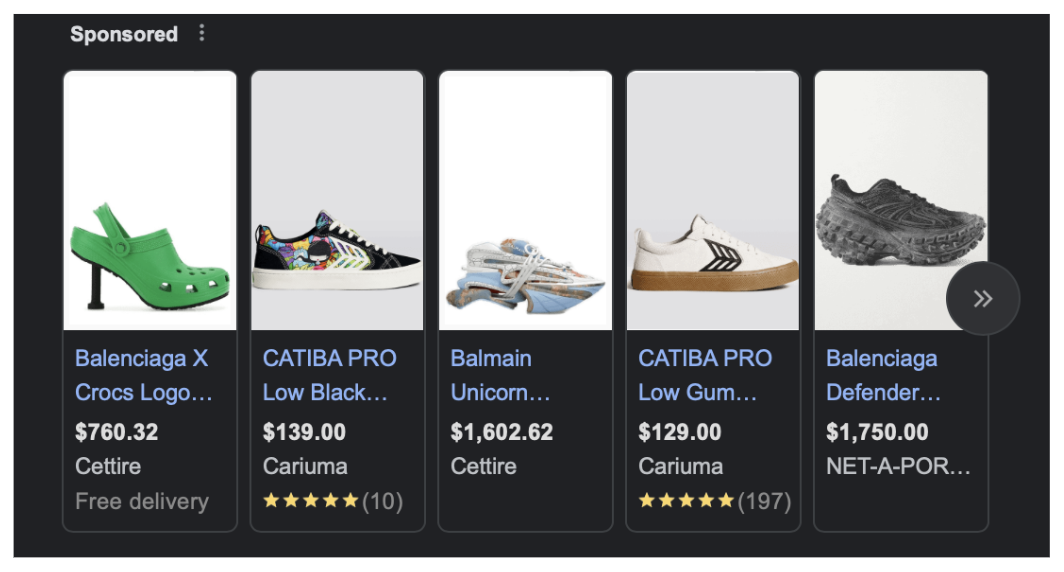
Review Mark Up
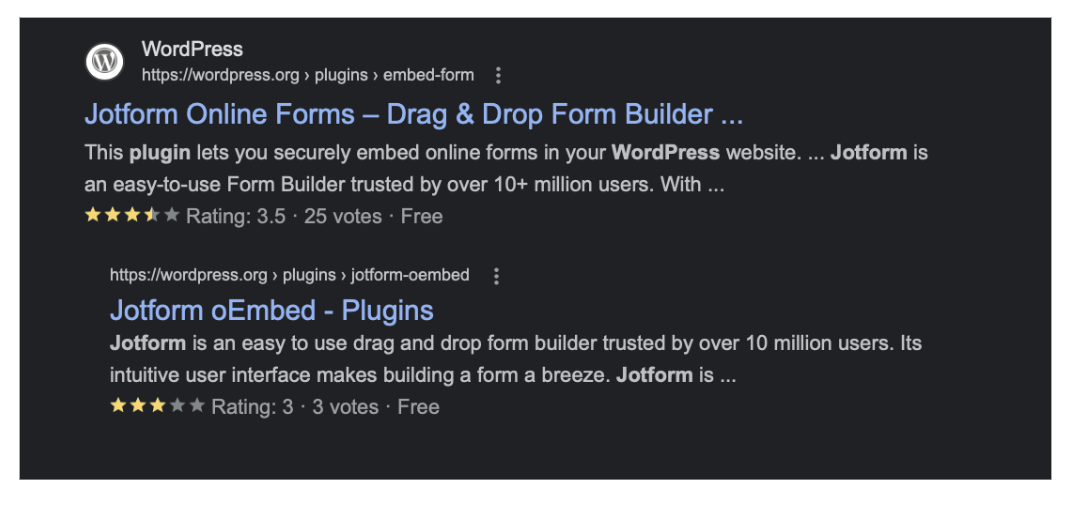
Star ratings are also visible on link listings, ads, rich results like recipe cards, local pack results, review sites, and on app store results.
Depending on the type of rich results, the schema markup can vary. For example, the schema markup for a product is different to that of a recipe.
Complete an audit of where you can implement schema markup and get on it!
Boost Your Social Media Reputation By Maximising Your SEO Work
You can’t really escape Facebook, Instagram or TikTok in this day and age!
Social media is an essential part of any company's marketing strategy.
However, with so many companies vying for attention on social media, it can be challenging to stand out and build a strong reputation.
This is where SEO comes into play.
By maximising SEO work, your business can boost its social media reputation and increase its visibility online.
The first step in maximising SEO work for social media is to conduct keyword research.
This involves identifying the keywords and phrases that are relevant to your business and industry. By incorporating these keywords into your social media profiles and posts, you can increase your visibility in search engine results pages (SERPs) and drive more traffic to your profiles.
In addition to keyword research, it is essential to optimise your social media profiles for search engines. This includes creating a descriptive and keyword-rich bio, using relevant keywords in your profile name and handle, and including a link to your website in your profile. By optimising your social media profiles, you can increase the likelihood that they will appear in relevant search results.
Another way to boost your social media reputation through SEO is to create high-quality, shareable content. This can include blog posts, infographics, videos, and other types of content that your audience will find valuable and informative. By creating content that people want to share, you can increase your visibility on social media and attract new followers.
When creating content for social media, it is important to keep in mind the best practices for SEO. For example - using relevant keywords in your headlines and captions, alt text for images, and optimising your content for mobile devices.
But all this is easier said than done - sometimes creating fresh content can be tricky.
We have been there!
If you are struggling with content ideas, you can also repurpose your top-performing content.
Convert blog pages to infographics, add images to your blog pages.
Repurpose and use content in social media or on your Google Business Profile.
By following these best practices, you can increase the chances that your content will be found and shared by your target audience.
Make sure you engage with your audience on social media. Respond promptly to comments and messages, share user-generated content, and participate in industry-related conversations. By engaging with your audience, you can build a strong community on social media and increase your visibility online.
Finally, it is important to measure the success of your social media SEO efforts.
This can be done by tracking metrics such as website traffic, engagement rates, and follower growth.
By monitoring these metrics, you can identify areas where you need to improve and make adjustments to your social media strategy accordingly.
Rank Your Website For Typical Reputation Management Keywords *modifiers
Reputation management is all about managing your reputation online.
In local SEO, first people will look for “Best XYZ in City” or “recommended XYZ in suburb”
Once people know your brand name, they’ll use the following type of keywords to see if you’re a reputable business.
Your customers will turn to Google to see reviews/ feedback of your products. But they can inadvertently also come across things like:
- [“brand name” reviews]
- [“brand name” scam]
- [“brand name” scandal]
- [“brand name” fraud]
- [“product name” reviews]
- [“product name” scam]
- [“product name” scandal]
- [“product name” fraud]
Brands like Nestle, and Johnson & Johnson have been involved in lots of scandals and gotten in trouble for their products.
For example - Here is an example of Johnson and Johnson baby powder scandal:
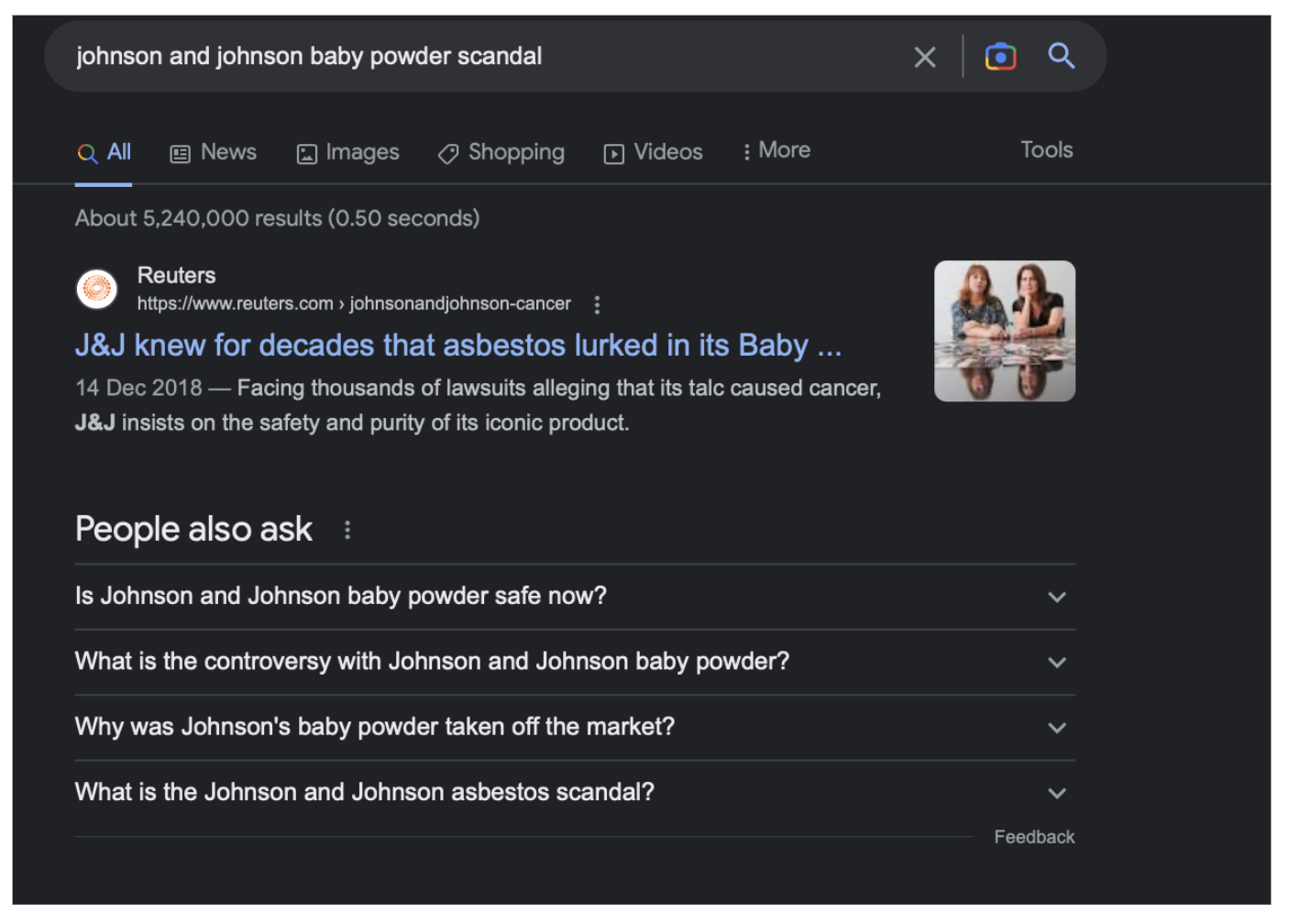
By using simple SEO tactics, PR nightmare can be turned into opportunity.
Don’t believe us..
This is way back in Feb 2018 when KFC ran out of chicken due to supplier issues.
More than half the stores had to be shut down in the United Kingdom.
The silver lining was how KFC turned this PR nightmare around. They apologised to their customers, addressed Q&As and engaged with customers via social media.
This is a classic example of how to handle negative situations.

Search for major brands like Woolworths, Coles and just add the words reviews, scandals, frauds, etc.
For example - On typing Woolworths and adding the word scandal, I can see multiple autocomplete suggestions like this:
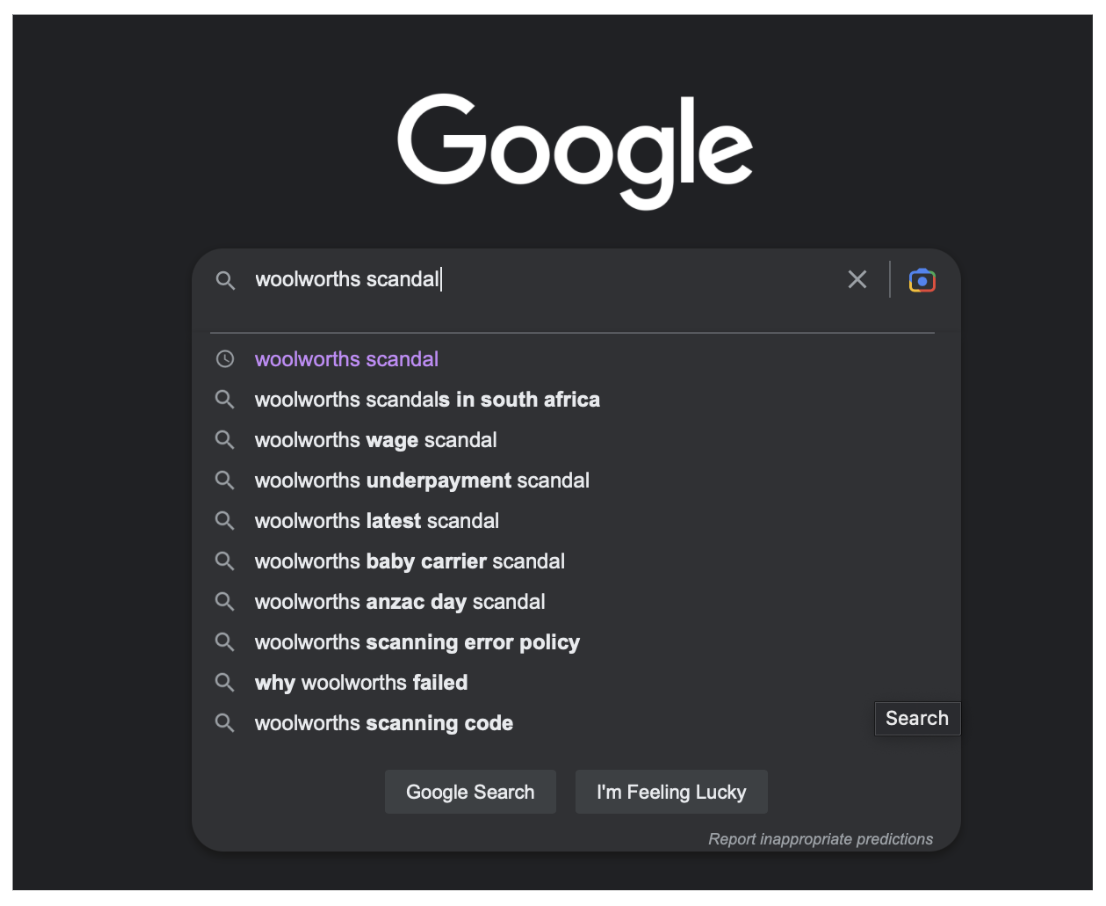
Here, Woolworths has a great opportunity to create “POSITIVE” content and address the negative publicity themselves.
Having pages targeting the keywords - scams, frauds, etc can help a brand create a narrative around it.
This puts the power back in the hands of the brand and helps them control the situation.
Expand Your Reputation Online
Leverage the keyword list in Step 6 and build positive reputation content hubs around the internet.
For example, you could create content on Quora, and Reddit.
Create Youtube videos targeting exact match keywords.
Post press releases targeting reputation keywords.
Aim to cover multiple things that “People Also Ask (PAA)” like:
- is [brand name] legit?
- Is [brand name] a scam?
- How do you manage your [brand name] subscription?
- Is [brand name] free to use?
- Is [brand name] Australian owned?
Check the PAA questions that appear for your brand and create content based around it.
Aim for your content to rank in the featured snippet to counter all such negative claims.
How Can We Help With Your Online Reputation Management?
Whether you are a small business or a large company, your online reputation can make a great impact.
Ensure you take care of your brand with the strategies listed above.
But if you are stuck and need more guidance on reputation management or local SEO, we are here to help. Get in touch with us on 1300 188 662 and we will be happy to help.

